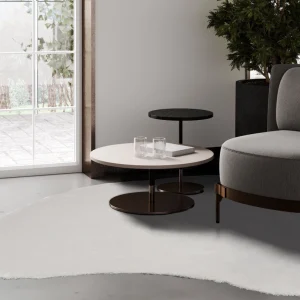By Jamie Mitchell
Depending on who you talk to, 3D printing – the process of making a three-dimensional solid object of virtually any shape from a digital model – is either a new industrial revolution or the most overhyped invention in recent history. Like most major inventions, though, 3D printing is remarkable because of its versatility, and possible uses include everything from 3D printed pasta shapes to replacement human organs, and from replacement parts for household items to clothes and fashion accessories.
Although the technology has actually been around since the mid-Eighties, 3D printing has only recently begun to really find its feet. We chronicle the brief but wondrous story of 3D printing so far, though its most amazing and groundbreaking developments.
A house

Picture: Dus Architects
Designed by Dus Architects and currently under construction, this is set to be the world’s first 3D-printed house. Situated beside a canal in Amsterdam and modelled on a traditional Dutch gabled canal house, the building will be made up of 13 rooms, and built from individual pieces of plastic up to 3-m high, which emerge from a specially built 3D printer (developed by Ultimaker), and are then slotted together on site, like over-sized Lego bricks.

Picture: Dus Architects
According to Hedwig Heinsman of Dus Architects, printing our own houses would mean we could ‘recycle waste materials into printable materials, eliminate large transport costs [and] really make unique and personalised architecture.’
The idea is that anyone can download the plans form the internet, configure their perfect version of the house and print their own.
A dress

Dita Von Teese wearing the 3D-printed dress. Picture: Francis Bitonti Studio
Having created weird and wonderful costumes for performers including Madonna, Rhianna and Lady Gaga, Michael Schmidt was a natural choice to design what he now describes as ‘The world’s first fully articulated 3D Printed dress’ for burlesque performer Dita Von Teese. Schmidt worked alongside New York-based architect Francis Bitonti to create a dress which was produced entirely by 3D printer.
After Bitonti coded Schmidt’s design, the dress was printed in 17 sections containing over 3,000 pieces made from nylon using a process called selective laser sintering (SLS).

Picture: Francis Bitonti Studio
Schmidt designed the dress on his iPad and communicated with Bitonti through Skype during the process of imagining 17 unique pieces and 3,000 joints that let the dress move with the body. 3D-printing design studio Shapeways, printed each piece of the dress, which was then painted with black lacquer and finished off with some 13,000 black Swarovski crystals.

Picture: Francis Bitonti Studio
It may be a while before we’re all walking around in ‘just something a 3D printed this morning’ but it does seem possible that 3D printing will have a significant role in the future of fashion.
Sex toys
Just as the Internet has become, for many people, simply a place to watch free porn, the invention of 3D printing also has its naughty side – most notably as a means of producing bespoke sex toys. Far less embarrassing than walking into your local branch of Anne Summers, and you can be specific about the details, creating something that’s truly personal.
US adult novelty company the New York Toy Collective gives customers the chance to ‘scan your own’, while Makerlove offers open-source files for people to customise their toys before printing in the privacy of their own home.
A gun

‘Liberator’ gun, 2013 By Cody Wilson / Defence Distributed © Victoria and Albert Museum, London
From the Internet to the jet engine, it’s hard to think of a single major invention that hasn’t been used for harm as well as good, and 3D printing is no exception.
Created, by Texas law student Cody Wilson, the Liberator (the name echoes that of Samuel Colt’s famous revolver The Peacemaker) is made almost entirely of ABS plastic and was printed using a 3D printer that cost just $8,000 (£5,140) from online auction site eBay. Of its component parts, only the firing pin is made of metal.
Considering it a significant example of design and invention, Britain’s V&A Museum bought the gun last year for its permanent collection.
Prosthetic limbs

Perhaps one of the most exciting applications for 3D printing is in creating replacement parts for things – household machines and perhaps even our own bodies. One of its most inspiring uses to date has been the creation of prosthetic limbs for people in Sudan who have lost limbs amputees.
Mick Ebeling, co-founder and CEO of Not Impossible Labs read the TIME article and decided to take action. Named after Daniel Omar, a Sudanese 14-year-old who had his hands blown off by a bomb dropped by the Sudanese government in an attack on rebel forces, Project Daniel was initiated by Mick Ebeling co-founder and CEO of Not Impossible Labs, a research firm that aims to tackle daunting healthcare challenges using low-cost, open-source methods.

Ebeling read about Daniel (the the other 50,000 amputees in South Sudan) in Time Magazine and was determined to do something to help.
Travelling to South Sudan, Ebeling worked with a US surgeon Dr. Tom Catena to set up a special lab in a local hospital. Using consumer-grade 3D printers, they created prosthetic arms designed to be simple and affordable enough for anyone who needs one (the one Daniel received cost about $100 to produce).

Ebeling then taught local people how to make the limbs themselves. ‘If we could teach the locals to do this themselves, then theproject could live on long after we left,’ he says. ‘It did. Even though the war in Sudan is still being waged, there has been an arm a week printed there since then team left.’
Personal 3D printers

Perhaps one day, 3D printers will be as ubiquitous in our homes as televisions have been. Personal ‘affordable’ 3D printers, such as the Replicator 2, manufactured by American company Makerbot, which even has its own shop in Manhattan, have been around for a while, but one of the most interesting and potentially game-changing new products is The Micro, a new desktop 3D printer that costs less than an IPhone and is being launched through crowd-funding website Kickstarter.
Costing just $249 (£150) and weighing 2.2lbs (1.2kg) the Micro prints objects up 4.6-inches (116mm) tall. Created by M3D, it comes ready to use out of the box, and there’s no setup or instructions.

The printer comes with a software interface that allows the user to scroll through ready-to-print digital objects, meaning all the user has to do is ‘click print and watch it go’.
The campaign runs until 7 May and, at the time of writing, M3D had raised $2,997,580.
A chair
.jpg)
Picture: Thomas Duval
The Solid C2 chair, the first item of furniture to be 3D printed in one piece, was manufactured by a process called stereolithography, a kind of 3D printing in which a computer-controlled laser heats and solidifies a photosensitive epoxy resin upon contact. Created by French designer Patrick Jouin in collaboration with digital manufacturers Materialise.MGX, the chair is made of intersecting ribbons of epoxy resin, which have been built up, layer upon layer, to create a single complete object. This method differs from traditional handcrafting or conventional mass-production methods such as assembly, carving, and moulding.
The chair is now owned by the Stedelijk Museum in Amsterdam.
Living tissue
Perhaps one of the most exciting ideas for the future of 3D printing is the possibility of ‘printing’ living human tissue – skin, perhaps and even functioning organs.
At the moment several companies are working on producing human tissue through 3D printers (a process known as bioprinting) including UK-based company PrinterInks, which has teamed up with US start-up Organovo, a company specialised in designing and printing functional human tissue for medical research and therapeutic applications.
Eventually, it is hoped that this new technology may help reduce organ shortages and cut transplant rejections as patients receive new organs constructed from their own cells.






